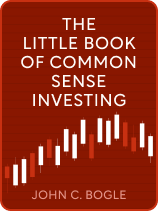

This article is an excerpt from the Shortform book guide to "The Little Book of Common Sense Investing" by John C. Bogle. Shortform has the world's best summaries and analyses of books you should be reading.
Like this article? Sign up for a free trial here.
What is equity in stock trading? How do investors earn profit from publicly traded equities or stocks?
Broadly speaking, equity is the part of a company that belongs to its owners. When companies are publicly traded, investors can acquire partial equity in them by purchasing shares of their stock.
Keep reading to learn how equity investing works.
Equity and the U.S. Stock Market
What is equity in stock trading? In the US, investors can purchase equity traded on the US stock market—basically, the market containing all of the US’s publicly traded companies. Consequently, investors gain wealth when stock prices rise and lose wealth when stock prices fall.
(Shortform note: In addition to publicly traded stocks, some investment funds purchase private equity—in other words, companies that aren’t publicly traded—with the aim of eventually selling them for a profit. Because private equity funds last a finite amount of time, private equity firms typically have concrete plans to improve the companies they acquire, ensuring that they profit when the investment term ends.)
(Shortform note: US-based investors can also purchase stocks in international companies that belong to foreign stock markets. According to some experts, foreign stocks are a valuable means of diversifying investors’ portfolios, offering protection in case the US stock market dips.)
According to Bogle, stock market investors earn profit from three factors: dividends, earnings growth, and speculative returns.
1. Dividends are payments that a company makes to its shareholders. For instance, in 2022, the energy company Phillips 66 made quarterly payments of 67 cents per share to shareholders. (Shortform note: Not all companies pay dividends to shareholders. Instead, that money is reinvested in the business, which ideally raises its stock’s value and allows shareholders to make more money when they sell.)
2. Earnings growth is the yearly rate of increase in a company’s earnings. Because stock prices reflect earnings growth, companies with higher earnings growth will see their stock price rise more quickly. (Shortform note: Among the companies that pay dividends to shareholders, earnings growth can translate to higher dividends by virtue of the increasing stock price. This is because dividends are often paid to shareholders as a percentage of the share price—for example, Apple might pay shareholders 2% of the price per share in additional dividends.)
3. Speculative returns are the change in stock price caused by investors’ speculation about a company. Bogle measures speculative returns by the price/earnings ratio (P/E)—how many dollars investors are willing to pay for each dollar of a company’s earnings. When P/Es are high, it indicates that speculative returns are also high.
(Shortform note: Bogle initially defended this tripartite analysis in a co-published academic article, in which he argued that considerations of simplicity and parsimony favored his analysis over more sophisticated models. Other experts, however, have argued that models like Bogle’s yield less accurate results since they mistakenly assume that P/Es will always revert to a fixed long-term average—in other words, that the average of future P/Es will match the average of past P/Es. Instead, they argue, changes in macroeconomic conditions can prevent future P/Es from reverting to past averages. Consequently, they propose what they claim is a more accurate model that takes into account the economic fluctuations that affect P/Es.)
Historically, Bogle observes that the US stock market has grown an average of 9.5% annually since 1900. Of this growth, Bogle notes that 4.4% came from dividends, 4.6% came from earnings growth, and 0.5% came from speculative return.
(Shortform note: Although the US stock market has grown an average of 9.5% annually, its returns have often been volatile year-to-year. For example, the stock market crash of 2008 saw the S&P 500 drop over 38%, whereas five years later, in 2013, the S&P 500 grew nearly 30%. Consequently, investors shouldn’t expect to earn 9.5% every single year.)

———End of Preview———
Like what you just read? Read the rest of the world's best book summary and analysis of John C. Bogle's "The Little Book of Common Sense Investing" at Shortform.
Here's what you'll find in our full The Little Book of Common Sense Investing summary:
- A simple winning strategy for novice investors
- Why index funds are superior to mutual funds
- Why bonds belong in your investment portfolio






